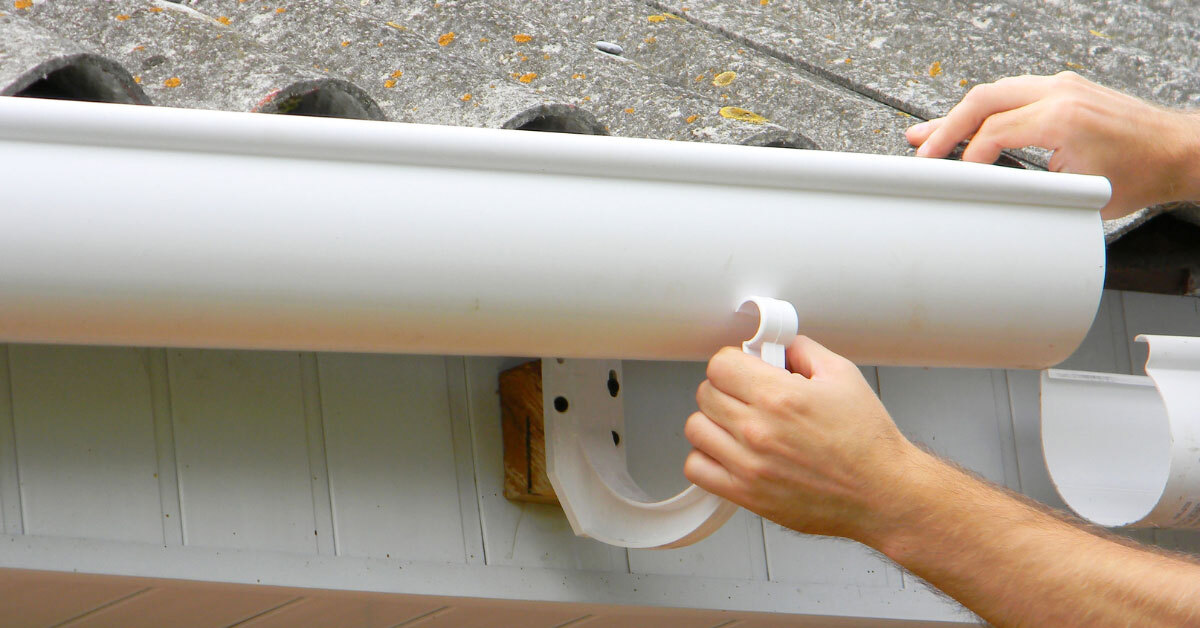We all know the signs that your roof needs care and attention, but what about your gutters? Gutters are often overlooked when it comes to the health of your roof and can actually prevent damage to your roof, siding, and other parts of your home if they are well maintained over the years.

Here are some things to keep in mind when thinking about the health and life of your home’s gutters:
Safety First:
The right tools go a long way! Before you climb up that ladder and start cleaning your gutters, it is important to make sure you have the proper tools. You will want to make sure you have the basics like a pair of thick work gloves, non-slip shoes, and safety goggles.
Most importantly, you’ll want to make sure you have a tall and sturdy ladder. For most one- and two-story homes a 20-foot or taller extension ladder will be your best choice to have the proper height to reach your gutters. Make sure to position your ladder on even surfaces. If there are power lines nearby or your gutters are taller than a story, it is best to call experienced professionals to avoid unnecessary risks.
Cleaning your gutters at least twice a year:
Your gutter’s lifespan can be increased greatly with regular cleaning. This will ensure the exterior of your home stays spotless longer.
Each Fall you probably have cleaning your gutters on your to-do list, however, it is important to do it more than once. By the end of Spring, your gutters are prone to be clogged with dirt, leaves, and debris that have previously fallen on your roof. Clearing these each summer is vital to the preventative maintenance of your home. For those who live in rainy and high storm areas, your gutters are more susceptible to more frequent clogging of debris.
Check for pests and rodents:
There are many different types of small pests that may have found a little home in your gutters. Termites, carpenter ants, mice, rats, and beehives are among the popular ones. Don’t ignore these pests because they will become a big problem for you and your home later on so should be addressed immediately.
Clear the roof:
Often, the debris that clogs your gutters most is from your roof. This can be from heavy rainfall, wind, or simply gravity pushing it down. Take safety into account when you go to scale such heights. Never go when it is icy, wet, or windy. Inspect your downspouts: Just like you should clear your gutters regularly, you should do the same for the downspouts and any other pipes leading away from your home. It is important to check for any leaks, rust, or clogging. Also, to ensure that water is not draining too close to your home, make sure your downspouts extend several feet from your home.